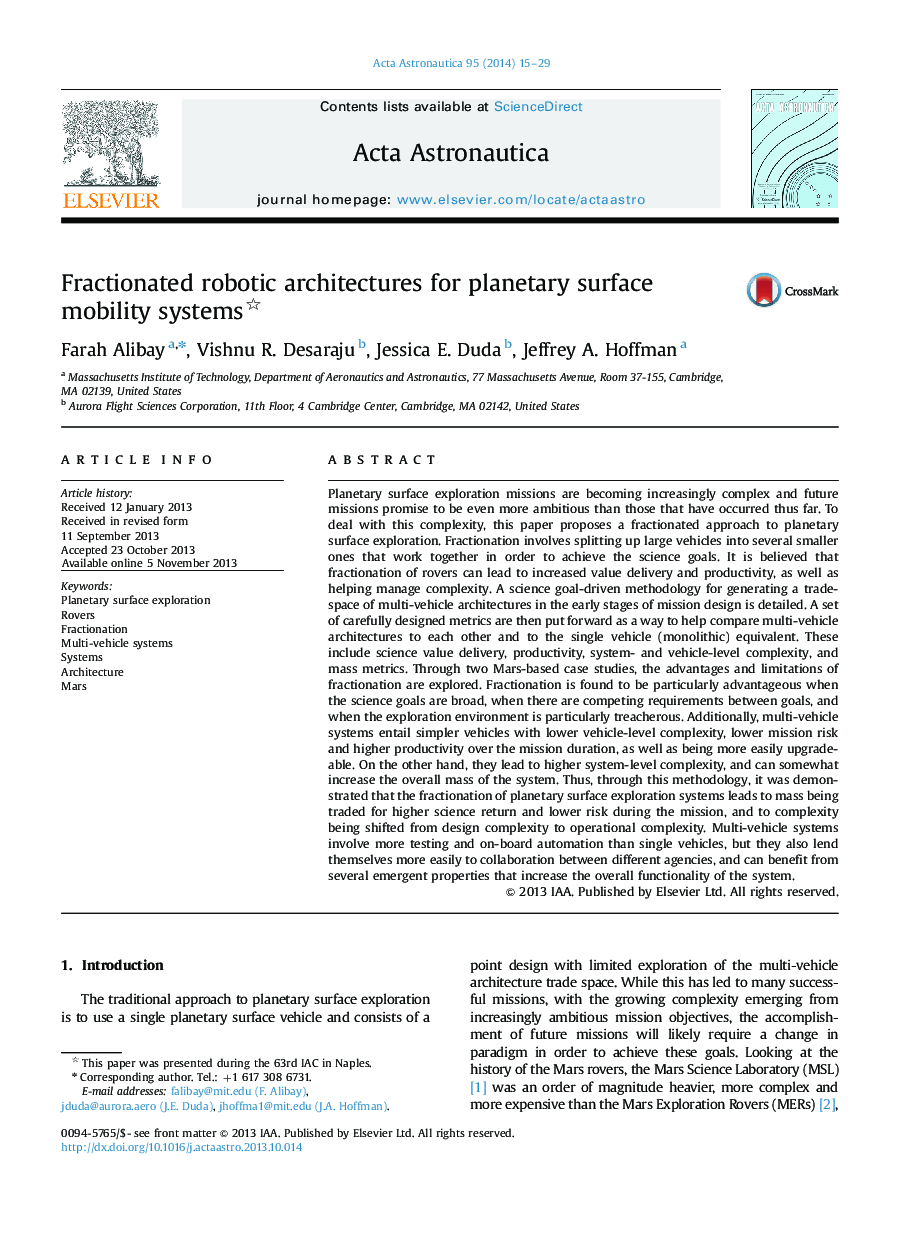| کد مقاله | کد نشریه | سال انتشار | مقاله انگلیسی | نسخه تمام متن |
|---|---|---|---|---|
| 1714672 | 1519957 | 2014 | 15 صفحه PDF | دانلود رایگان |
• A fractionated, multi-vehicle approach is proposed for planetary surface exploration.
• Metrics are developed to evaluate fractionated architectures in early mission design.
• Two Mars-based case studies are used to illustrate the framework.
• Fractionation leads to higher productivity and value delivery.
• The cost of fractionation is higher mass and system-level complexity.
Planetary surface exploration missions are becoming increasingly complex and future missions promise to be even more ambitious than those that have occurred thus far. To deal with this complexity, this paper proposes a fractionated approach to planetary surface exploration. Fractionation involves splitting up large vehicles into several smaller ones that work together in order to achieve the science goals. It is believed that fractionation of rovers can lead to increased value delivery and productivity, as well as helping manage complexity. A science goal-driven methodology for generating a tradespace of multi-vehicle architectures in the early stages of mission design is detailed. A set of carefully designed metrics are then put forward as a way to help compare multi-vehicle architectures to each other and to the single vehicle (monolithic) equivalent. These include science value delivery, productivity, system- and vehicle-level complexity, and mass metrics. Through two Mars-based case studies, the advantages and limitations of fractionation are explored. Fractionation is found to be particularly advantageous when the science goals are broad, when there are competing requirements between goals, and when the exploration environment is particularly treacherous. Additionally, multi-vehicle systems entail simpler vehicles with lower vehicle-level complexity, lower mission risk and higher productivity over the mission duration, as well as being more easily upgradeable. On the other hand, they lead to higher system-level complexity, and can somewhat increase the overall mass of the system. Thus, through this methodology, it was demonstrated that the fractionation of planetary surface exploration systems leads to mass being traded for higher science return and lower risk during the mission, and to complexity being shifted from design complexity to operational complexity. Multi-vehicle systems involve more testing and on-board automation than single vehicles, but they also lend themselves more easily to collaboration between different agencies, and can benefit from several emergent properties that increase the overall functionality of the system.
Journal: Acta Astronautica - Volume 95, February–March 2014, Pages 15–29
